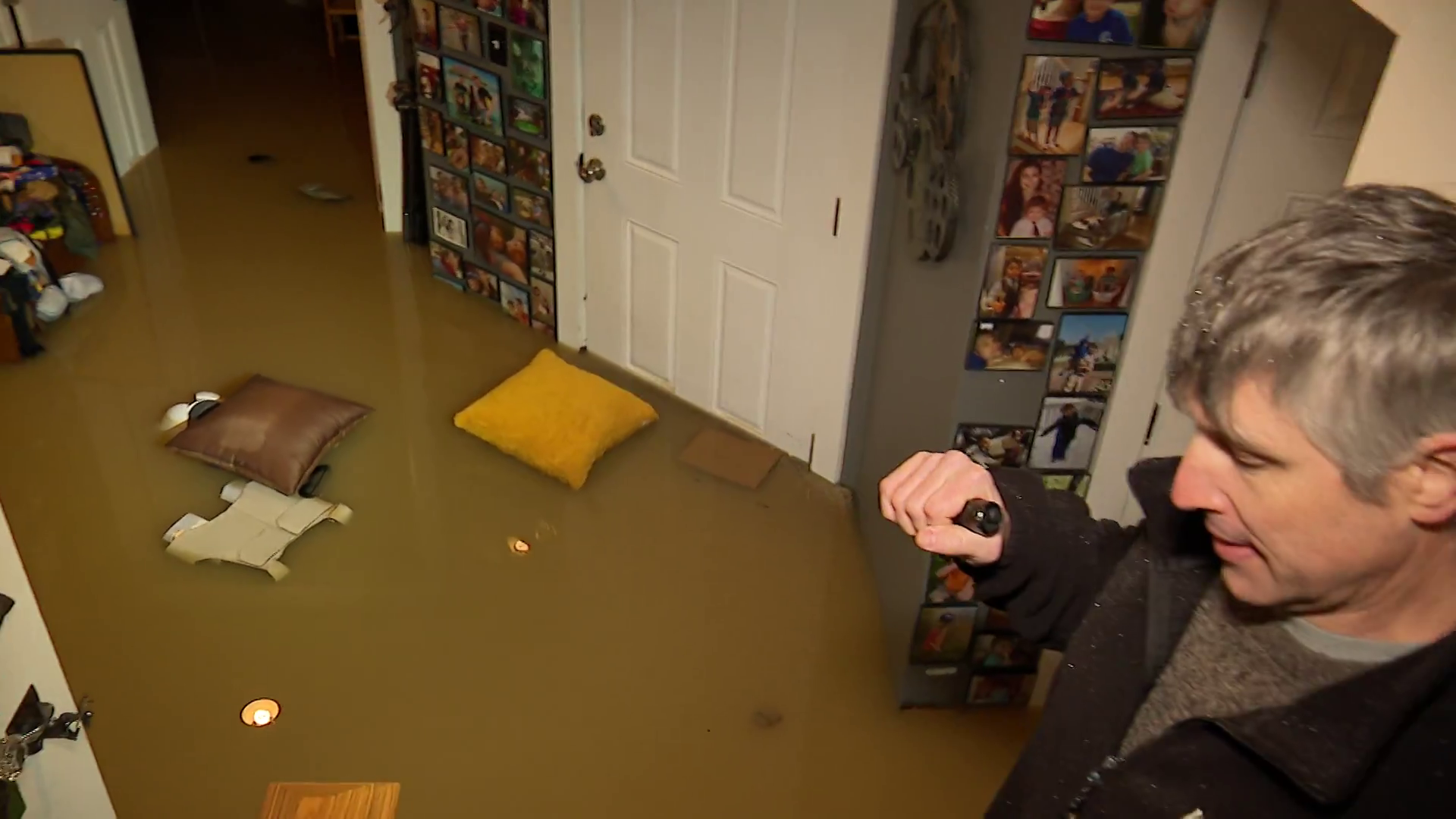When Poplar Island was on the brink of extinction from severe erosion, the government stepped in to rebuild the land mass using dredge. NBC4’s Tisha Thompson reports on how workers are keeping pace with the Chesapeake Bay’s sea level, which can rise nearly twice as fast as other American coastlines.
When Justin Callahan first arrived on Poplar Island, there wasn't much to see.
"There was literally nothing left out here," he said.
A project manager for the U.S. Army Corps of Engineers, Callahan explained how the once-inhabited island had eroded away from 1,140 acres in 1847 to less than five in 1993.
But the island is now bigger than ever because the government needed a place to put thousands of gallons of dredge.
"We're actually taking something that doesn't really have any particular use and we're using it to restore a vanishing habitat here in the Chesapeake Bay,” Callahan said.
They pull the dredge out of the bottom of the Bay’s shipping channel just north of the Bay Bridge to a make room for the new mega-ships that are starting to come through the Panama Canal and into the Baltimore Harbor.
A lot of the employees on the island call the dredge when it first arrives “chocolate milk” because it’s “about 90 percent water and about 10 percent solids,” Callahan said.
Local
Washington, D.C., Maryland and Virginia local news, events and information
Starting in 1993, the Army Corps first rebuilt the island’s outer edge with heavy stone and created “pods” to pump the dredge into. Each pod divvied up by enough landfill to allow cars and heavy machinery to move around the island.
Once a pod fills up, it sits and dries out about three years until it becomes a wide, flat plain with large fissures crisscrossing the surface.
Bulldozers literally sculpt this barren land by creating carefully engineered channels and hillsides, before punching a hole in the pod’s dyke to allow water to flow in.
Once the bay water arrives, contract employees hand-plant marsh grasses. Callahan estimates they’ve already planted two million plugs and have another two million to go.
"We're actually rebuilding a vanishing land," he said.
And as nearby islands testify, the threat of vanishing is very real here in the Chesapeake, with at least a dozen islands disappearing within the past 100 years.
"We know that we've already seen a foot of sea level rise over the last century," said Zoe Johnson of the National Oceanic Atmospheric Administration.
She’s spent her career studying the impact of sea level rise on the Bay.
"We could see in the next 50 years about one-and-a-half to two feet of sea level rise in the Chesapeake Bay,” she said. “And over the next hundred years, anywhere from four to six feet."
Johnson explained that along with Louisiana and Florida, the Chesapeake coastline is considered one of the most vulnerable areas in the nation because not only is the water rising, but the bottom of the bay is actually sinking, meaning some experts predict the water here could rise twice as fast as other parts of the country.
"What really strikes me are the significant amounts of land on Maryland's Eastern Shore and the Eastern Shore of Virginia that are vulnerable to even one or two feet of sea level rise,” Johnson said. “There are enormous expanses of land throughout the Chesapeake that are very low-lying, and those are the areas that are most vulnerable."
Johnson said marshes make terrific buffers between towns and flood waters because they naturally build up sediment that can keep up with sea level rise.
But Callahan said building marshland from scratch requires some complicated engineering. "It's rather difficult for a project when you're constructing marshes because marshes are designed to be inundated frequently by the tides, so you can't necessarily build a marsh so high to protect against sea level change without making the marsh ineffective."
He designed each pod to flood at least twice a day, and it appears to be working.
"We've been monitoring these things for years and we're seeing the ground surface of the marsh is rising,” Callahan said. “So, we know we're at least keeping up and in some cases outpacing sea-level rise. That's how we know we think these marshes are going to be around for a while."
Because the completed pods are now accreting sediment naturally on their own, “It’s very possible” to build an island if you can find a financial benefit for it, Callahan said.
Before they’re done, they will spend more than $1 billion bringing the island back from the brink, because billions more depend on ships getting through to Baltimore, Callahan said.
And they've got to put all that dredge somewhere.
Reported by Tisha Thompson, produced by Rick Yarborough, and shot and edited by Steve Jones.



